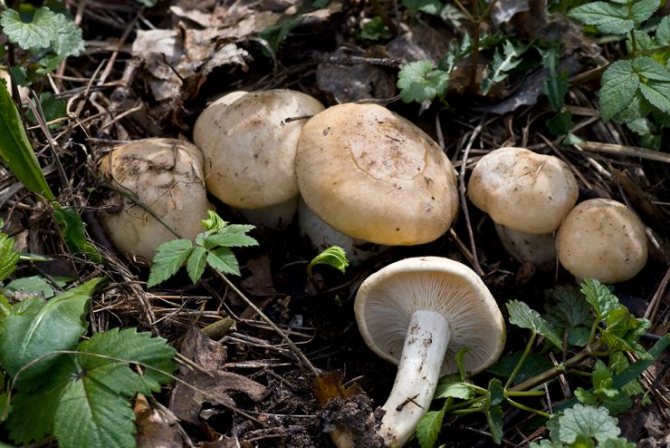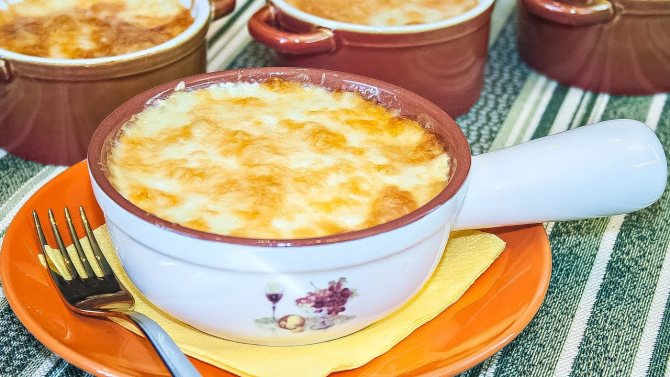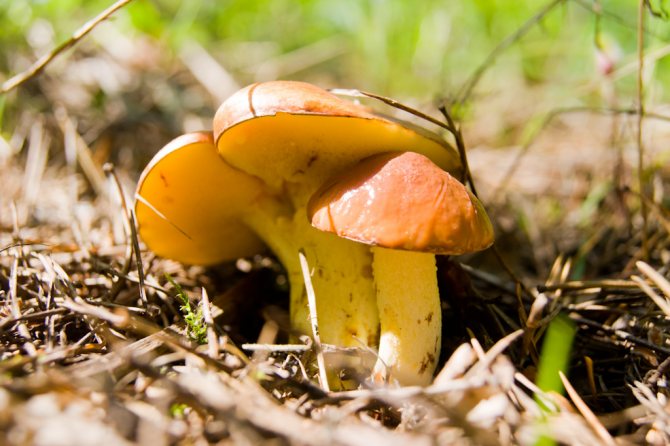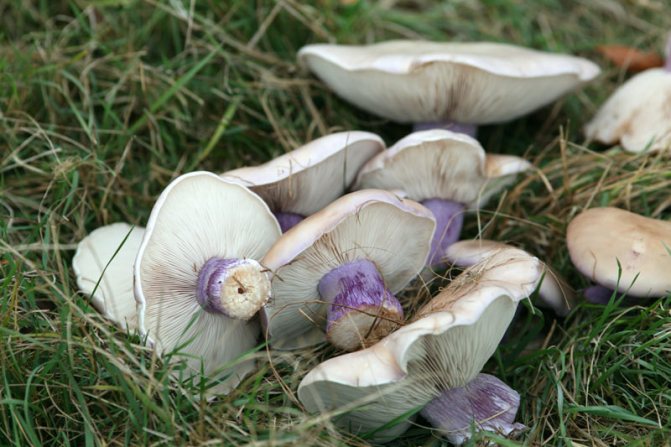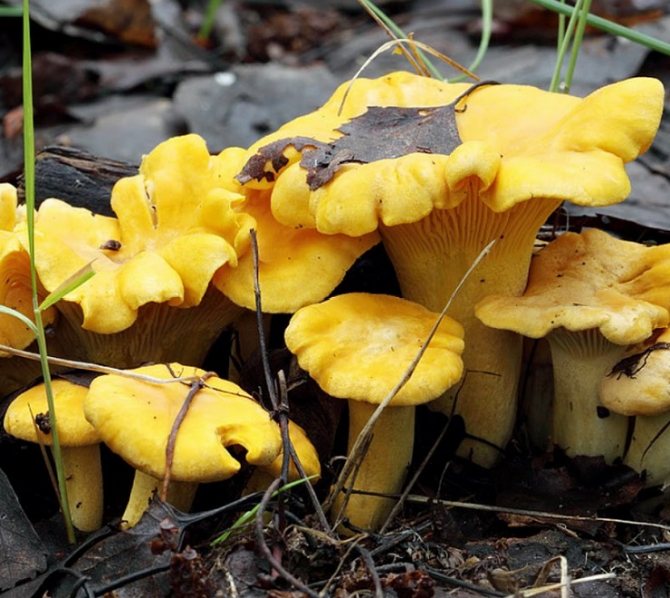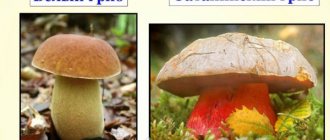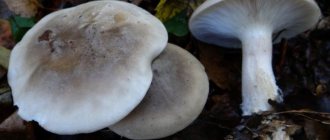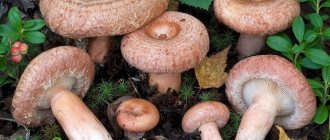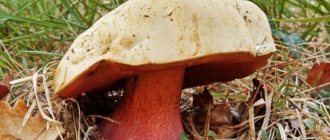How to distinguish edible species
Mushrooms are not only tasty, but also very healthy food. They contain substances such as salts, glycogen, carbohydrates, as well as vitamins of groups A, B, C, D. If the mushrooms are young, then they also contain many microelements: calcium, zinc, iron, iodine. Their reception has a beneficial effect on the metabolic processes of the body, increased appetite, the work of the nervous system and the gastrointestinal tract.
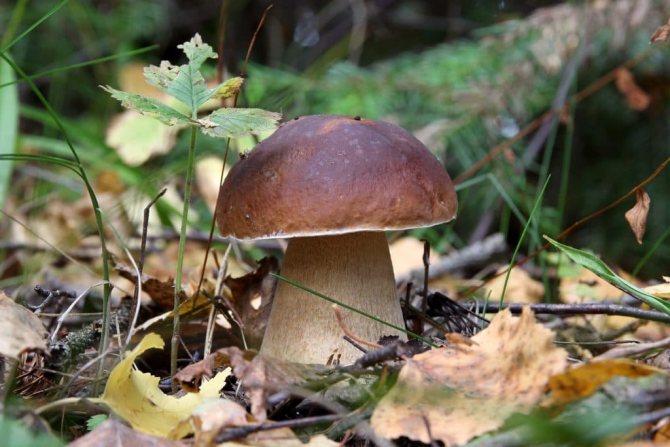
Forest edible mushrooms
In fact, there are no exact criteria by which to distinguish between safe and poisonous mushrooms. Only existing knowledge about the appearance, signs and names of each species can help in this matter.
Characteristic features of edible mushrooms
Common criteria for edible mushrooms include:
- Lack of a pungent bitter smell and taste;
- They are not characterized by very bright and catchy colors;
- Usually the inner flesh is light;
- Most often they do not have a ring on the leg.
But all these signs are only averaged, and may have exceptions. For example, one of the most poisonous representatives of the white toadstool also does not have a pungent odor at all and its flesh is light.
Another important point in this matter is the growing area. Usually edible species grow away from their dangerous counterparts. Therefore, a proven harvesting site can significantly reduce the risk of running into poisonous mushrooms.
Common misconceptions
There are many accepted and non-standard methods of determining the safety of mushrooms among the people. The most common misconceptions are:
- Silver spoon. It is believed that it should darken on contact with an inedible fungus;
- Onion and garlic. They are added to the decoction of mushrooms and, if they darken, it means that there is a poisonous look in the pan. It is not true;
- Milk. Some people believe that when a mushroom dangerous for humans is dipped into milk, it will surely turn sour. Another myth;
- Worms and larvae. If they eat certain types of mushrooms, then they are edible. But in fact, some species that are edible for worms can harm human health.
And another common myth says that all young mushrooms are suitable for consumption. But this is not true either. Many species are dangerous at any age.
Cooking applications
Rosewood, as noted earlier, is an edible mushroom that can be consumed after pre-cooking. Immediately after harvest, the fruits should be cleaned of damaged areas and washed well. Can be soaked in water for 30 minutes to completely clean the surface of dirt and sand. Mushrooms are delicious in any form. You can cook delicious roasts from them, julienne and even simply fry with onions - such a dish will also be very tasty.
For those who have not tried the leaflet yet, we advise you to use the following simple cooking recipes:
- Pickled baseballs... Immerse fresh peeled backs in boiling water and cook for 5 minutes, remove from heat, drain the water. Put them back in the pan and cook for another 10 minutes, then drain the water again and put the mushrooms in jars. Prepare the brine: add salt (2.5 tbsp) to the water (2.5 l), 8-10 cloves of garlic, 1 tsp. black peppercorns, 7 tbsp. l. vinegar, stir, boil for 5 minutes. Pour the mushrooms with the resulting brine and roll up.
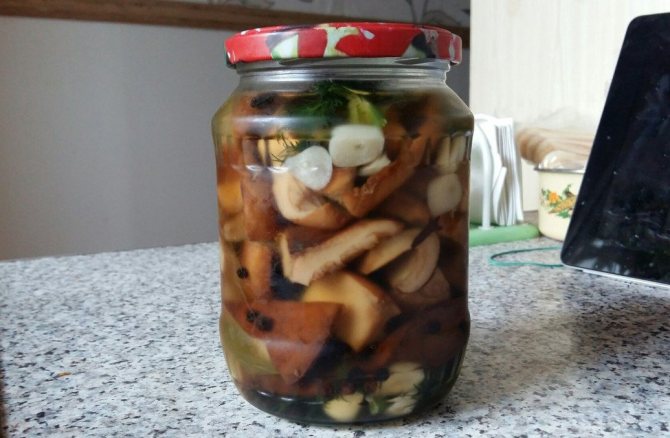

- Mushroom soup... Put the pre-boiled pallets in a frying pan with vegetable oil and lightly fry. Add chopped onion and grated carrots to this, continue cooking until golden brown. Pour the resulting mass into a saucepan with water (you can use chicken broth), add diced potatoes, salt and cook for 30 minutes. At the end of cooking, season with chopped herbs.


- Spaghetti with mushrooms... Fry finely chopped onion in a frying pan until transparent. Attach chopped, pre-boiled pallets, salt, pepper to it. Cook for about 15 minutes. Add the diced tomatoes and keep on the fire for another 5-7 minutes. Boil spaghetti separately in salted water and add to the pan with dressing, stir and heat for 2-3 minutes. If desired, the dish can be sprinkled with cheese, herbs.
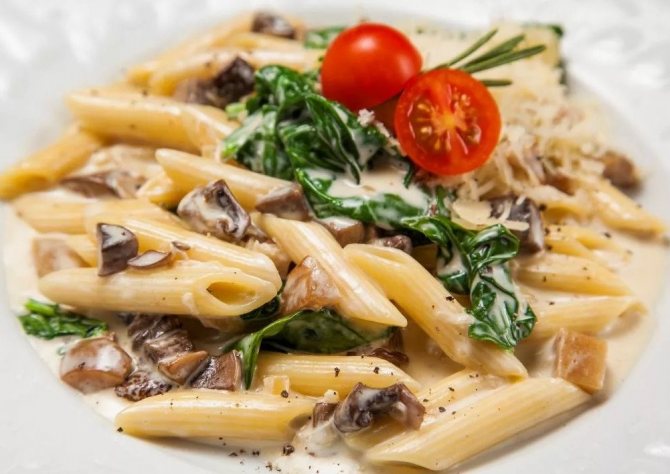

Extended list of edible mushrooms and their description
In order to indicate the names of all edible mushrooms and give them descriptions, you will need a whole book, since there are so many varieties of them. But more often than not, people opt for the most famous, already trusted species, leaving dubious representatives to professional mushroom pickers.
White mushroom
It is also known as boletus. This mushroom has gained popularity due to its nutritional value and aromatic taste. It is suitable for any kind of processing: frying, boiling, drying, salting.


White mushroom
The porcini mushroom is characterized by a thick light stem and a large tubular cap, whose diameter can reach 20 cm. Most often it is brown, brown or red in color. Moreover, it is completely heterogeneous: the edge is usually lighter than the center. The lower part of the cap changes color from white to yellow-green with age. A mesh pattern can be seen on the leg.
The inner flesh is dense and tastes like a nut. When cut, its color does not change.
Ryzhik
Very high-calorie and nutritious look. Great for pickling and pickling. Other treatments can be used, but it is best not to dry it. It is characterized by a high degree of digestibility.
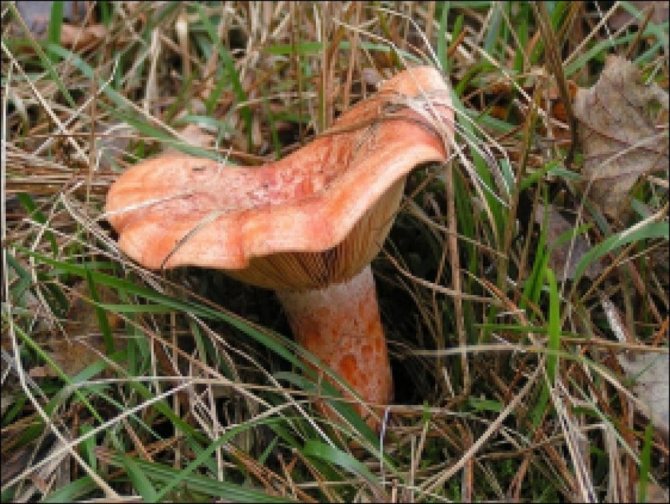

Mushroom
The main feature of saffron milk caps is their bright orange color. Moreover, the color is characteristic of all parts of the mushroom: the leg, the cap and even the pulp. The hat is plate-shaped and has a depression in the center. The color is not uniform: the redhead is diluted with dark gray spots. Plates are frequent. If you cut the mushroom, the flesh changes color to green or brown.
Boletus
A common species, which, as the name implies, prefers to grow next to an accumulation of birches. Ideal fried or boiled.


Boletus mushroom
Boletus has a cylindrical light leg covered with dark scales. It is quite fibrous to the touch. Inside, light flesh with a dense consistency. May turn slightly pink when cut. The cap is small, similar to a gray or brownish cushion. There are white tubes at the bottom.
Boletus
A favorite nutritious mushroom of many that grows in temperate zones.
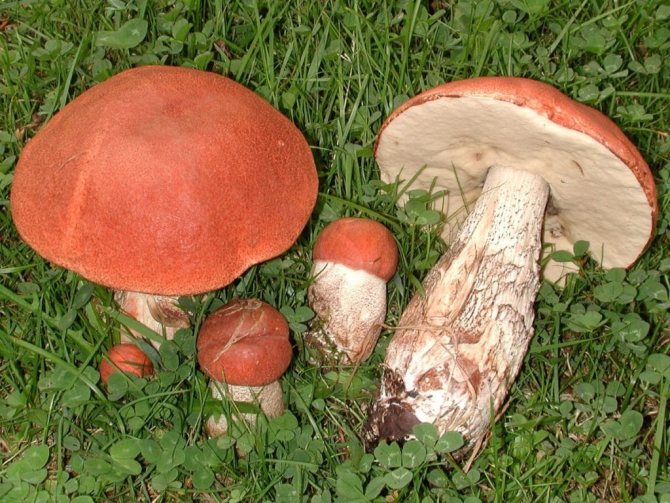

Boletus mushroom
It is not difficult to recognize it: the plump leg expands to the bottom and is covered with many small scales. The hat is hemispherical, but with time it becomes flatter. It can be red-brown or white-brown. The lower tubes are close to a dirty gray shade. When cut, the inner flesh changes color. It can turn blue, black purple or red.
Butterlets
Small mushrooms that are most often used for pickling. They grow in the northern hemisphere.
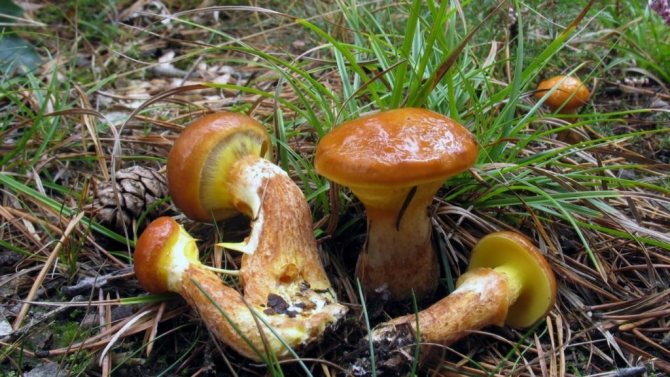

Butter mushroom
Their cap is usually smooth and, in rare cases, fibrous. From above it is covered with a mucous membrane, so it may seem sticky to the touch. The stem is also predominantly smooth, sometimes with a ring.
This type necessarily requires preliminary cleaning before cooking, but the skin is usually easily peeled off.
Chanterelles
Some of the earliest spring fungi. They grow in whole families.
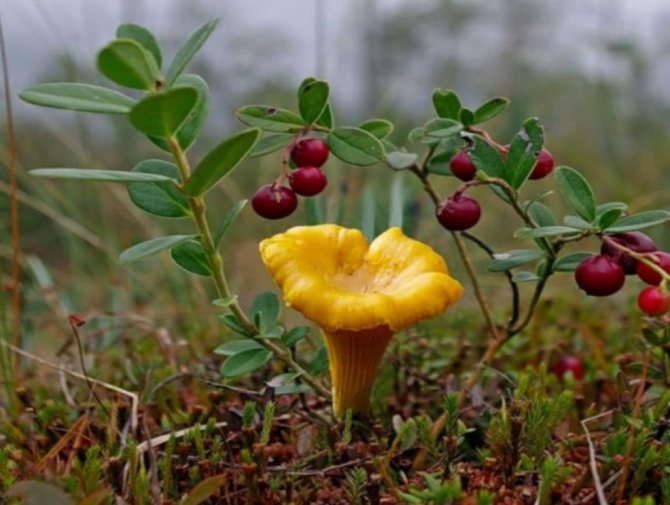

Chanterelles
The hat is not a standard type. Initially it is flat, but over time it takes the shape of a funnel with a depression in the center. All parts of the mushroom are colored light orange. The white pulp is dense in consistency, pleasant to the taste, but not nutritious at all.
Mosswheel
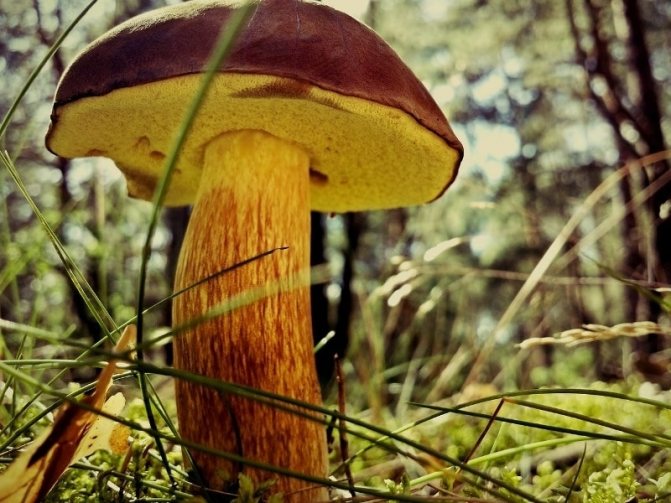

Mushroom mushroom
A delicious mushroom found in temperate latitudes. The most common types are:
- Green. It is characterized by a gray-olive cap, yellow fibrous stem and dense light flesh;
- Swamp. It looks like a boletus. The color is predominantly yellow. When cut, the flesh turns blue;
- Yellow-brown. The yellow hat takes on a reddish tint with age. The stem is also yellow, but at the base it has a darker color.
Suitable for all types of cooking and processing.
Russula
Quite large mushrooms growing in Siberia, the Far East and the European part of the Russian Federation.
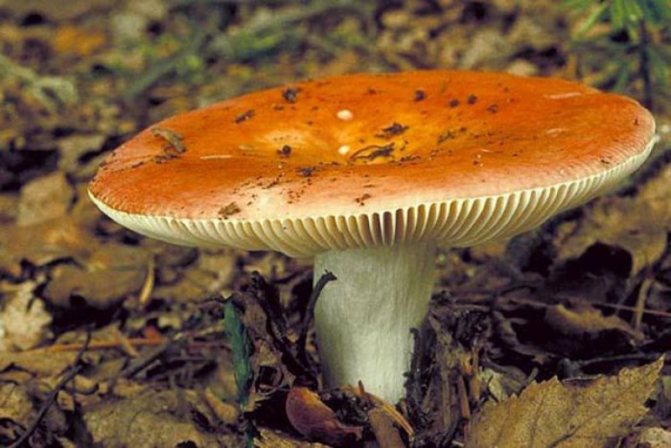

Russula mushroom
Hats come in a variety of colors: yellow, red, green, and even blue. It is believed that it is best to eat representatives with the least amount of red pigment. The cap itself is rounded with a small depression in the center. The plates are usually white, yellow, or beige. The skin on the cap can be easily removed or peeled off only along the edge. The leg is not high, mostly white.
Honey mushrooms
Popular edible mushrooms that grow in large groups. They prefer to grow on tree trunks and stumps.


Mushroom mushrooms
Their hats are usually not large, their diameter reaches 13 cm. In color, they can be yellow, gray-yellow, beige-brown. They are most often flat in shape, but in some species they are spherical. The leg is elastic, cylindrical, sometimes has a ring.
Raincoat
This species prefers coniferous and deciduous forests.


Mushroom raincoat
The body of the fungus is white or gray-white, sometimes covered with small needles. It can reach a height of 10 cm. The inner flesh is initially white, but over time it begins to darken. Possesses a pronounced pleasant aroma. If the flesh of the mushroom has already darkened, then you should not eat it.
Rowing
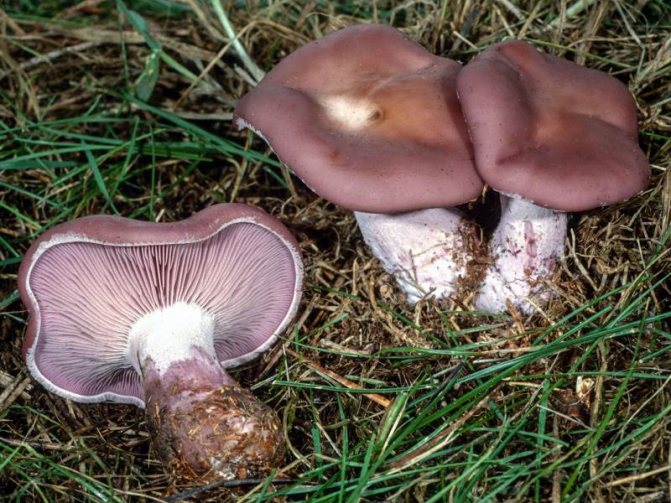

Mushroom ryadovka
It has a fleshy convex cap with a smooth surface. The inner flesh is denser with a pronounced odor. The leg is cylindrical, expands to the bottom. In height, it reaches 8 cm. The color of the mushroom, depending on the species, can be purple, brown, gray-brown, ashy and sometimes lilac.
Polish mushroom
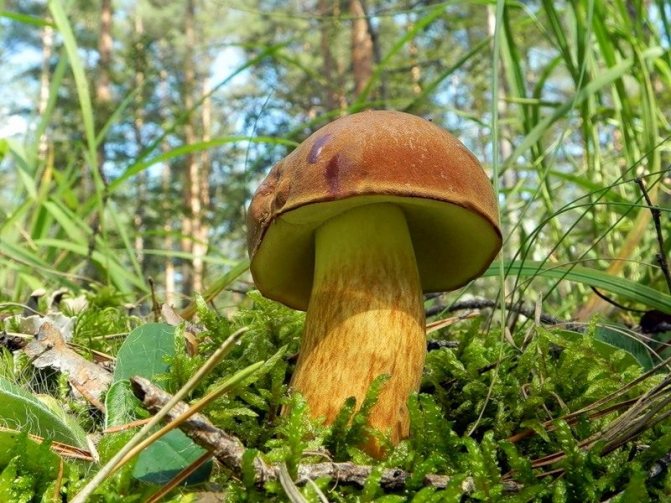

Polish mushroom
You can recognize it by a brown or brown pillow-shaped hat. The surface is slightly rough to the touch. The lower tubes have a yellow tint, which turns blue when pressed. The same thing happens with the pulp. The stem is cylindrical inhomogeneous color: from above - darker, from below - lighter.
Dubovik
An edible tubular mushroom that grows in sparse forests.
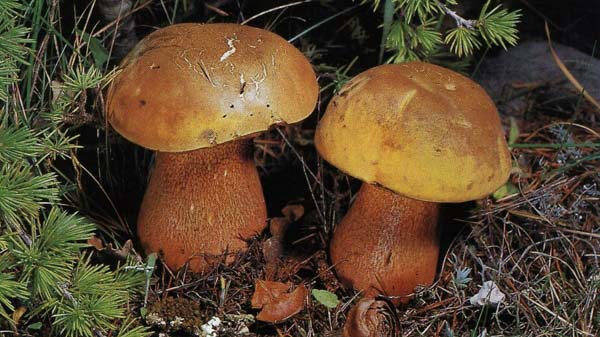

Oak mushroom
The cap is quite large, it grows up to 20 cm in diameter. In structure and shape, it is fleshy and hemispherical. The color is usually dark brown or yellow. The inner flesh is lemon-colored, but turns blue when cut. The high leg is thick, cylindrical, yellow. To the bottom, it usually has a darker color.
Oyster mushrooms
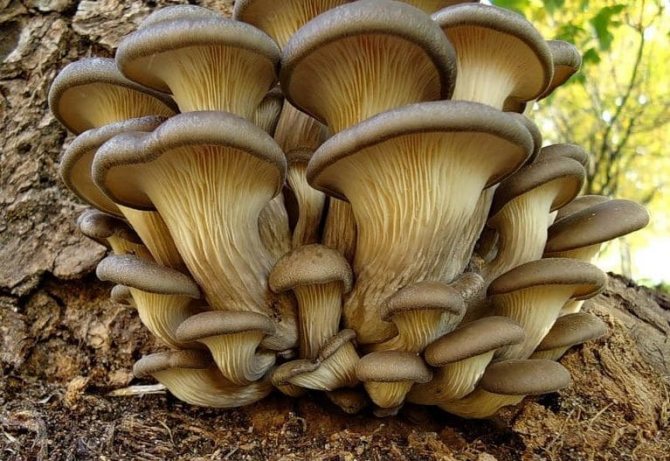

Oyster mushroom
It is characterized by a funnel-shaped cap, up to 23 cm in diameter. The color, depending on the type, can be light, closer to white, and gray. The surface is slightly matt to the touch, the edges are very thin. Light legs of oyster mushrooms are very short, rarely reaching 2.5 cm. The flesh is fleshy, light, with a pleasant aroma. The plates are wide, their color can vary from white to gray.
Champignon
A very popular edible mushroom due to its delicious taste and high nutritional value. Their description and characteristics are familiar not only to mushroom pickers.
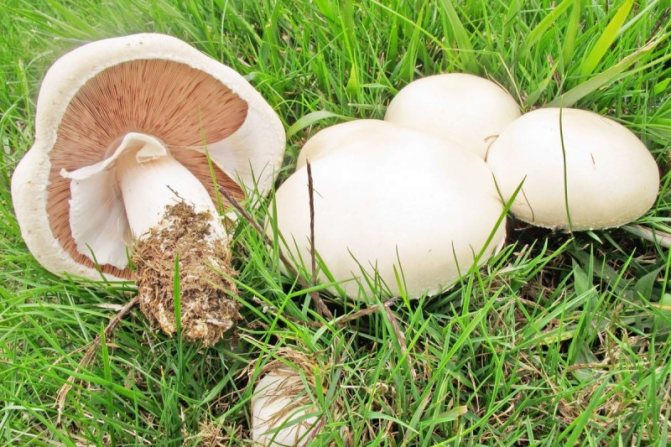

Field champignon mushroom
These mushrooms are familiar to everyone for their white color with a slight grayish tint. Spherical hat with a downward-curved edge. The leg is not high, dense in structure.
Most often they are used for cooking, but they are rarely used for salting.
Mushroom Locations Map
Mushroom places of the Rostov region are represented by several types of territories.
You can collect in the following places:
- Semikarakorsky, Chertkovsky, Milerovsky and Tarasovsky districts.
- Coastal area of the Don River.
- Pine planting near the town of Milerovo.
- Alexander forest.
- Schepkinsky forest.
In the Semikakorsky district, not far from the regional center of the same name, there are many water resources. On wet river banks, on ravine and mossy areas, field species actively grow. Among them are spring lines and mushrooms. Found in coastal forests and a species of white mushroom. Less attractive other field gifts are dung beetles. Raincoats do not attract people either.
Chertkovsky plantings are rich in rows and mushrooms. The latter are predominantly spring species. Millerovsky district is visited when picking porcini mushrooms and real mushrooms. On the territory of the Tarasovsky district, you can collect mushrooms and mushrooms.
The pine forest is rich in boletus, boletus, boletus. Earlier mushroom pickers feasted on pig, but today it is considered a dangerous poisonous mushroom. There are pine plantations in the Kamensky district.
The Aleksandrovsky (Atamansky) forest is considered rich in gifts. It is deciduous, composed of ash and hawthorn. Knowledgeable mushroom pickers recommend looking under a layer of leaves - this is where delicious fruit bodies are hiding. It is really possible to collect russula, mushrooms, boletus mushrooms there. They note that you have to get to the season: sometimes there is simply nothing to collect in the forest, since the fruits are trampled by wild animals or have already been collected by people.
The city "Schepkinsky Les" (Rostov-on-Don) behind Orbitalnaya Street offers to hunt for a blue leg and a white mushroom. There are small ponds, and different types of mushrooms are found nearby on wet soil. Mostly this forest is deciduous.
Conditionally edible mushrooms
The edibility of mushrooms in the forest can be conditional. This means that such species can be eaten only after a certain type of processing. Otherwise, they can harm human health.
Processing implies a thermal process. But if some types need to be boiled several times, then for others, soaking in water and frying is enough.
These representatives of conditionally edible mushrooms include: real milk mushroom, green ryadovka, purple cobweb, winter honey fungus, common scaly.
Favorable places for a quiet hunt or where do the rows grow?
Among the thousand varieties of rowing, only 45 grow in Russia. Their favorite zone is the middle latitudes and the North Caucasus.
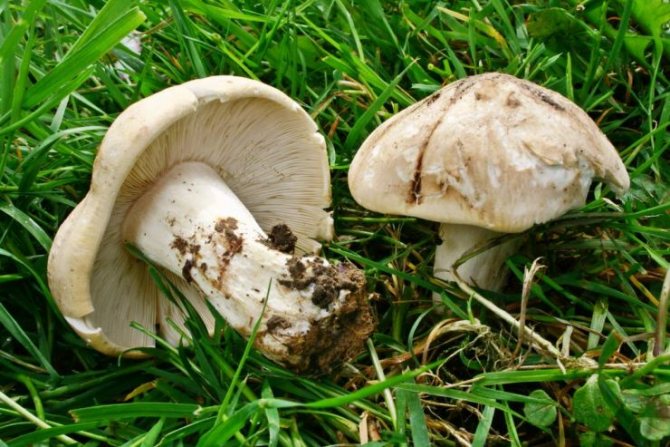

Most of the species can be found in coniferous forests. Rare species prefer to coexist with oak, beech, ash, poplar, birch.
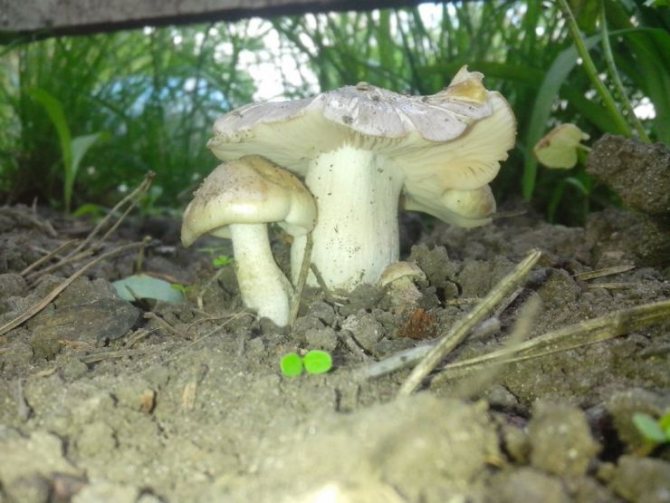

Even less often, they can be found in areas with fruit trees. Some can be found on your lawn. These representatives include mushrooms in May.
